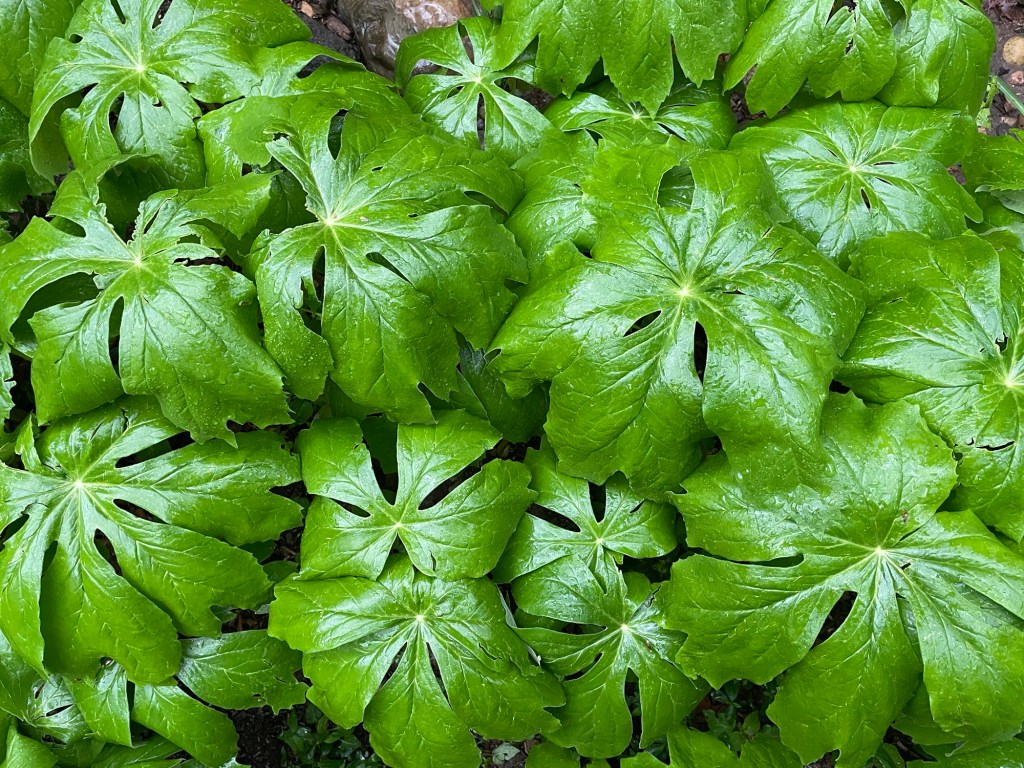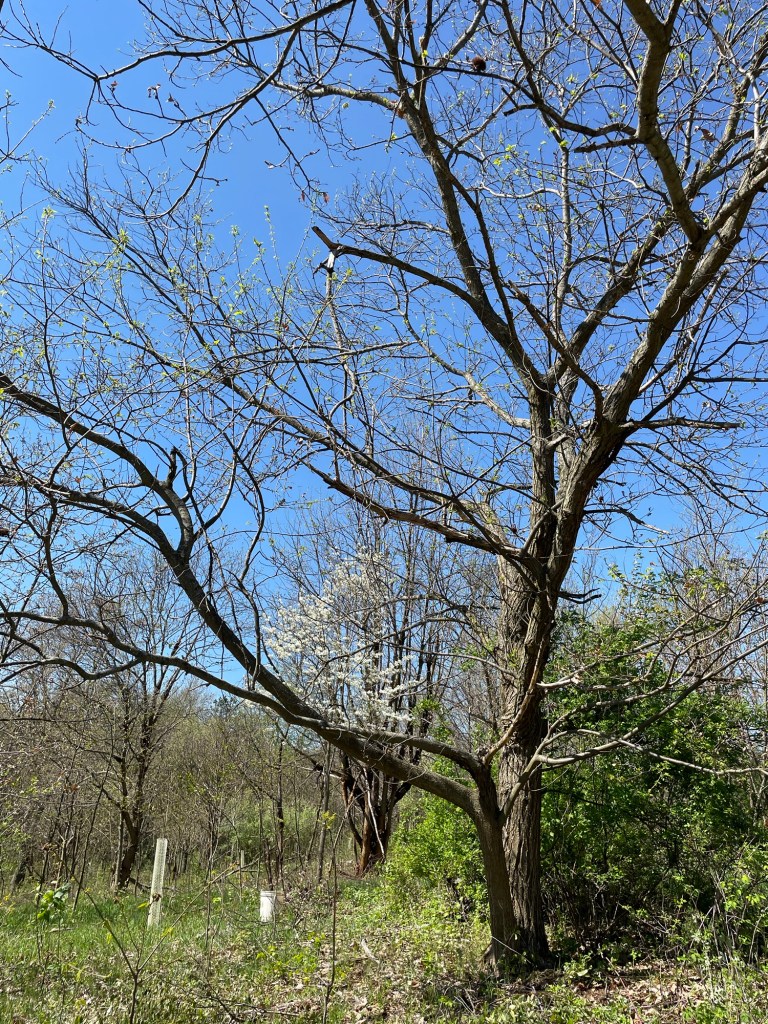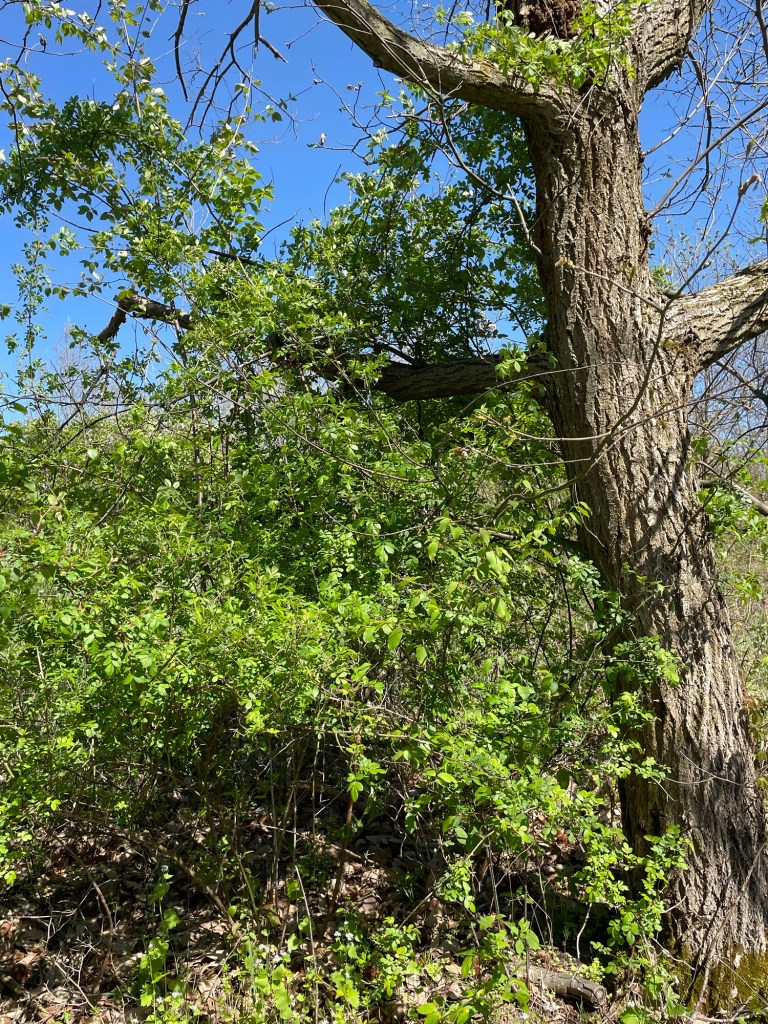We tend to think of forests as a random set of circumstances creating infinite random configurations of plants each situated spatially that is highly variable. Things are not in rows. We would tend to think, “oh this is much more desirable and destined for perfection” in our minds if forests were laid out like corn fields. If every tree was in a row, we could maximize the production of something spectacular like Maple syrup or hazelnuts. For agriculture rows are very efficient. It turns out that the row system is not the most efficient in natural systems which is why you do not see linear patterns to any degree. Yet like these mayapples I do see a pattern emerging. Do you? Here is something I am currently working on that is a big surprise to me. Random is not that random in my tree crop plantings created by ‘nature’ . What will my tree crop plantings look like in the future? I wondered if I could influence this in some way to create the new forest canopy using the existing germplasm being propagated on site under and in between the trees I planted.

In the real world we have orchards, landscapes and forests. These are almost always linear and do not allow for ‘creativity’ or the seeding in of other types of plants by an unknown vector like birds or squirrels. I am using the word creativity to mean energy expended by nature to expand a given set of circumstances that are currently in place. We like and want everything to be uniform and tidy. The forest says okay if you want to be tidy but in order to bring in more diversity we are hedging our bets on maximum distribution of seeds in any way possible including human aided ones. It does not matter the source of the plant, its location or its global origin. In this creation there is no such thing as native or non-native to the forest. This free for all and come what may is not agriculture. Forestry would interpret it but only based on the maximum gain by wood production via standing timber. This is the beauty of ecological integration. This is why you see these amazing assemblages of plants within the confines of urban environments. It reflects our plant and human cultures merging on so many levels.

At my tree farm, I began seeing a lot of different seedlings growing in my plantings. I did not want to remove them thinking they might add some value to the planting. I purposely positioned many of my original trees based on the soil, topography and wind. I did not measure it to any degree because it was such a pain carrying around a tape measure in the thick tall grass. It took too long to tap in stakes or wire flags where to plant. It was from here I began to use the triangle closely packed spherical spatial patterns emulating Buckminister Fuller in his design science detailed in his Synergetics books. I also got pretty good at eye-balling it. As the trees matured the animals used those trees for cover, roosting and food and soon seeds were planted in these areas using the germplasm from my farm. Rather than cut these trees out, I pruned them upwards limbing up the lower limbs, partially removing other shrubs and trees and favoring the seedlings within this emerging forest. My plantings were growing well but the next generation were more resistant to disease and faster growing from direct seeding. The seedlings were never too dense and the plants like multiflora rose allowed for even more diversity to establish as it prevented browse as new seeds were dropped and covered by leaf litter. Star thistle and shade thinned the grasses which aided further direct seeding into the planting areas.



The trees created a pattern of distribution of the different genus in a very unique pattern. It accounted for plant disease,light penetration and for nutrition and health. I let the apple trees grow under the chestnuts. I maintained a new strain of blackberry in my chestnut trees. I let the shellbark hickories seed into the chestnuts. The chestnuts now have walnuts in the planting. I found one area developing beautiful American beech and American basswood. I let the pears grow under the black oak. The pawpaws grew ever so slowly into the pears. This sort of selection created a secondary forest of sorts with a common ‘goal’ if you will. FRUIT. The spacing is not too dense yet not to far apart. As I measure this progress, I soon see a pattern emerging and an orderly transition from field to forest.
Random has structure. Random is not chaos. The design is implemented automatically as order is already there as an unseen design like a architect drafts a building. The design is just another expression in the infinite tree crop forest.

You must be logged in to post a comment.